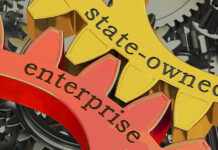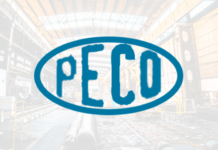Given the quantitative nature of financial analysis, it is easy to forget that investing is fundamentally about understanding people. You can stare at the numbers all day, but if you neglect to look at the people who make the business what it is – its owners, managers, employees, and customers – you will have missed most of the story.
And when it comes to the initial public offering (IPO) of Roshan Packages Ltd (RPL), it is most certainly easy to get blown away by the numbers.
By virtually every measure, RPL’s listing was a smashing success, blowing well past analysts’ expectations of the strike price in the Dutch auction used in the book-building phase of the offering, with the final price clocking in at Rs86.25 per share, nearly 2.5 times the Rs35 per share floor price, and 21.5% higher than the highest strike price of Rs71 per share predicted by market analysts. Most analysts had predicted a price of between Rs50 and Rs60 per share. At that high a price, RPL will raise Rs2.1 billion just from institutional and high net-worth investor Heads.

So, what is it about RPL that analysts like? In a note issued to clients on Friday, January 13, shortly before the book-building process of the IPO, Ali Shah Jumani, a research analyst at Alfalah Securities, a brokerage firm, summarized the case succinctly: “Our liking for the scrip is backed by Roshan’s robust expansion strategy, planned backward integration into liner and fluting business through its investment in Sun Tao Paper Mill, and strong financial performance indicators (FY2011-16 revenue and profit growth of 21.1% and 27.1% respective, and an average return on equity of 20.8%). Moreover, the overwhelming price performance seen in recent listings keeps us confident on short term price performance.”
But while the numbers are impressive, and the market certainly seems to have faith in the company, for the long-term investor, what matters much more is the people who run the business. On that score, the truly remarkable aspect of Roshan Packages is not its revenue growth or rising profitability numbers, but the fact that its founders are the family that made their original fortune as the publishers of Urdu Digest, a magazine that started off as a Readers’ Digest imitation in 1959.
Why is that important, you might ask. Because to go from publishing a magazine to starting, running, and successfully growing an industrial enterprise reflects a degree of entrepreneurial vision and zeal that few family businesses in Pakistan possess.

An unlikely beginning
The story begins nearly six decades ago, when the founder of the Roshan Group, Aijaz Hassan Qureshi, graduated with a PhD in History in 1959 from a German university, and returned to Pakistan to launch an Urdu imitation of Readers’ Digest that same year. While Readers’ Digest seeks to remain ideologically unaffiliated, Urdu Digest reflects the political and religious views of its founder, which in turn were informed by his affinity with the Jamaat-e-Islami, a right-wing religious political party.
What makes this story relatively unusual is that unlike most family businesses where each successive generation manages the business worse than the last, Qureshi’s children had the good sense in 1989 to invest the wealth created from Urdu Digest and the family’s other publications into other businesses. Specifically, they decided to enter the fruit export business, focusing on selling Pakistani mandarins around the world. That business was named Roshan Enterprises, and came to become the dominant commercial interest owned by the family by the early 2000s.
But the family was not done with their growth aspirations.
In 2002, they created Roshan Packages Ltd (RPL), initially as an attempt at backward integration for Roshan Enterprises. The goal was to manufacture the packaging material used by the fruit export business. In order to set up a viable business, however, Roshan Packages was set up with a much higher capacity than Roshan Enterprises could use on its own, and hence RPL began selling to other fruit exporters and, eventually, to food and consumer goods companies.
It would have been tempting to keep operating RPL as a subsidiary of Roshan Enterprises, and effectively never develop it as an independent business. Many Pakistani family-owned conglomerates, including some of those considered among the most sophisticated in the country, have a habit of doing that: creating subsidiaries that could become independent businesses in their own right, but are starved of management talent, capital, and vision thus effectively stunted at birth.
The Qureshi family, however, had other intentions for RPL. Since its founding, RPL has grown to become a business in its own right, with a relatively small share of its total revenues being generated by sales to its related entity, Roshan Enterprises. Its largest customers are now the who’s who of the local and global food and consumer goods business: PepsiCo, Unilever, Lotte Kolson, Continental Biscuits (Kraft Foods’ local affiliate), Tapal, and Coronet Foods, among others.
That base of large food and consumer goods companies is what has allowed RPL to grow its revenues by an average of 31% per year since 2009, and its profits by an average of 48% during that same period. However, that growth has come at the cost of increased risk: the proportion of revenue coming from its top seven clients has jumped from 40% in 2011 to 58% in the financial year ending June 30, 2016.

Inspiration at Harvard
For all their success at creating a large and successful industrial business out of a relatively small publishing house, the turning point for the family’s ambitions appears to have come around 2010, when Roshan Packages was ranked 23rd among Pakistan’s top 25 fastest growing companies by the AllWorld Network, an organization founded by the legendary Harvard Business School Professor Michael Porter to identify and make visible rapidly growing and scalable private companies across the world.
Tayyab Aijaz, the CEO and largest shareholder, attended a conference at Harvard after being included in that list and found the experience inspirational.
“Nobody thinks well of entrepreneurs or their employees in Pakistan. Michael Porter made us realise how important we are, that global growth, especially growth in employment opportunities, would come from small and medium enterprises like our company,” said Aijaz, in an interview with Profit.
Until that time, Aijaz had been running his business without having a full appreciation of how big of an achievement it was to attain the high growth rates his company saw in a security-constrained environment like Pakistan. Porter’s perspective as an outside observer helped him see that differently.
“Porter said he was surprised to see 40%+ growth rates in a country like Pakistan. He said ‘imagine what wonders you can unfold if conditions in Pakistan improved’. He appreciated our efforts. That day we realized: ‘oh, we are actually doing something worthwhile.’,” said Aijaz.
The conference also got Aijaz thinking about the necessary components of scaling up his business. While organizational structure and human capital were key considerations for Roshan’s growth strategy, ultimately, Aijaz kept coming back to the necessity of having a relatively unleveraged capital structure and a larger base of permanent capital than the company had at the time. The more he thought about it, the more it made sense to think about raising equity from outside investors through an IPO.
“We were working with banks, but they will only lend you so much to keep your leverage ratios low,” said Aijaz. “We are in an industry where technology changes rapidly, and in order to keep up, borrowing alone as a source of capital is neither sustainable nor suitable. And when we looked at our competitors, whether local or international, that was the one edge they all had over us: capital.”
While Aijaz had decided six years ago that he wanted to list his company’s shares on the stock exchange, he wanted to have a good reason to come to the market, and to have a project that would make optimal use of the funds RPL would seek to raise from the public.
That reason came along in 2015, when the company ran up against its manufacturing capacity as a constraint in growing its business.
RPL operates two divisions: one that makes corrugated packaging and another that makes flexible packaging materials. Both divisions are operating at higher than 90% of capacity and the company has struggled to grow its revenues in FY2016 largely due to capacity constraints.
The money raised from the public markets will primarily be used to increase the capacity of its corrugated division from 30,000 tons per year to 60,000 tons per year and to increase its flexible division’s capacity from 10,800 tons per year to 12,240 tons per year.
And somewhat surprisingly for a family-owned business, it appears that the current owners of RPL are willing to give its minority shareholders who invest in the IPO and thereafter “negative control”. Minority shareholders will have 30% of the post-IPO shares of the company, which means they will have more than the 26% they need to have the ability to block the appointment of a CEO by the majority shareholders.
Going further back in the supply chain
It appears that the Roshan Group is not done with its backward integration efforts, yet. As Aijaz explains, his current suppliers of paper have been less than adequate, and so the company has been forced to go into backward integration to manage both quality and control costs of its inputs.
“Our major cost is the paper that we buy either locally or import. Local manufacturers in places like Gujranwala, Sheikhupura, etc. are facing severe power outages lasting up to twelve hours a day,” said Aijaz. “Because we are dependent on our suppliers for raw materials, our production levels in the summer plummet because our suppliers fail to provide the paper on the agreed schedule or quality. Continuous load shedding deforms the paper quality, with folds, joints and cuts in the papers, rendering it useless for us. We used to bear that cost. We didn’t have a choice but to buy from the same suppliers because there were no others.”
The management’s current stop-gap measure has been: buy in bulk during the winter, when power outages are considerably shorter and more predictable, and use that stock during the summer. This strategy preserves quality, but has the disadvantage of tying up large amounts of working capital for the company.
To find a permanent solution for the problem, RPL has entered into a joint venture with a Chinese paper manufacturer Shandong Yongtai Paper Mill Company to set up its own plant that will manufacture fluting and liners, two key raw materials for corrugated packaging materials.

“This will enable RPL to source high quality raw material locally at a relatively lower price, replacing expensive imported and low quality local raw materials,” said Muhammad Ibadur Rahman, an analyst at Elixir Securities, in a note issued to clients on Monday, January 16. Rahman notes that RPL will have a 60% stake in the joint venture, to be named the Roshan Sun Tao Paper Mill (RSTP). The remaining 40% will be owned by Shandong Yongtai.
The paper mill, which is expected to cost Rs4 billion to set up, will be financed by a combination of debt and the free cash flows generated from the newly expanded RPL manufacturing facilities. When finished, the mill will be able to generate 137,000 metric tons of paper and will also have a 12-megawatt, coal-fired power generation unit to ensure that it has its own uninterrupted power supply throughout the year.

The blockbuster IPO
So the company appears to have a strong growth record and a management that appears to be thoughtful enough about the challenges it faces and innovative enough to seek to implement long-term solutions. But does that justify the Rs86.25 per share price that its IPO achieved? The market appears somewhat divided on that question.

IPOs in Pakistan generally tend to set absurdly low floor prices and Roshan Packages was no different, setting its floor price at Rs35 per share, just 8.6 times its latest 12 months’ (LTM) earnings per share (EPS), compared to a 16.1x average LTM price-to-earnings (P/E) ratio among its publicly listed peers.
Prior to the IPO, analysts’ opinion on the upcoming listing was overwhelmingly positive and unanimous in its verdict that the floor price was very low. Of the nine research reports surveyed by Profit, all had a buy rating, with average recommendation for investors to buy the stock at up to Rs55 per share, approximately a 58% premium from the floor price set by the IPO’s sole underwriters – Arif Habib Ltd.
After the IPO fetched a strike price of Rs86.25 per share, analysts appeared conflicted on whether that price was too high or just right. Among the most bullish on the listing is Zeeshan Afzal, the respected head research analyst at Insight Securities.
“I wouldn’t have been surprised if it had achieved a strike price of Rs90 considering an EPS of Rs5 to 6 next year, positive investment climate, and the liquidity gush,” said Afzal, in an interview with Profit. “I think they have not received very unfair valuation, though the strike price is on the higher side, in the book building process.”
Other analysts were somewhat more skeptical, suggesting that the valuations achieved were too frothy to be justifiable.
“Based on a strike price of Rs86.25, the company’s P/E multiple for fiscal year 2017 comes to around 22, which is much higher than that of the blue chip stocks in the same sector,” Taurus Securities’ equity analyst Adnan Sami Sheikh said. He was referring to Packages Limited, Cherat Packaging Limited and Tri-Pack Films Limited that have PE multiples of 16, 12.2 and 12 respectively.
“This is too expensive, as the most optimistic earnings forecasts for FY17 range between Rs3.8 and Rs4.0 per share, which would imply a PE of around 22, making it one of the most expensive scrips in the packaging space,” the analyst said.
Sheikh said that the expansion would take some time to become operational and “for it to reflect in earnings growth, maybe, the high valuation would be justified a couple of years down the line, but not right now”.
How high the P/E ratio should be for a stock to be considered fairly valued depends on a variety of factors. While a comparison with its publicly listed peers in the same sector is usually a good starting point, other factors can include things like higher growth rate; stable revenue streams; market-leading position; respected management team, etc. Each of these factors, when present, can justify a company’s stock price having a higher P/E ratio than other companies in the same sector.
Nonetheless, the fact that Roshan Packages has been listed at this high a price does mean that the market has reposed a high degree of confidence in the company’s management and its growth prospects, a fact that Aijaz does not deny, though he did seek to downplay it somewhat, in part by pointing out that his competitors have higher valuations than what may initially appear.
“I believe P/E multiple of Packaging Industry will remain higher than the market multiples due to direct relationship to consumer industry and it is evident from the fact that both Packages Ltd (taking just the core operations) and Century Paper are trading at P/E multiple of around mid 20s. Further our projections for earnings growth in FY2017 is much higher than other players that should justify higher multiple.” said Aijaz. “We don’t believe our P/E ratio is too high. I believe that it’s very reasonable and the market has judged us quite accurately. The market has full information, and I believe that its decision is perfectly normal.”
Post-IPO trading predictions
The stock price went up dramatically in part because a large number of high net-worth individuals bid the price up in order to seek allocations. The issue was oversubscribed by 6.8 times the total number of shares made available to institutional and high net-worth individuals. The fact that a large number of individual investors hold the bulk of the free float has led to conflicting predictions from analysts on what the post-IPO trading might look like.

Sheikh thinks that the high strike price means the stock will decline in post-IPO trading, citing the example of Al Shaheer Corporation’s August 2015 IPO. Al Shaheer was oversubscribed at a strike price of Rs95 against a floor price of Rs43, Sheikh said that it is now trading at Rs60 per share with a negative return of around 25% since its listing of August 2015.
Salman Rashid, a research analyst at Topline Securities seems to agree. “We believe it [RPL share] is overvalued. Based on current EPS, their P/E multiple is 25, which is even higher than that of Packages Limited, a company that has more than 50% share in the market,” Rashid says – Packages’ current P/E multiple is 21.
As far as growth prospects are concerned, the company has already taken care of some expansion in its flexible packaging division and is setting up a paper mill as well. “Both these projects will come online by mid-2017”, Rashid says, adding that they will bear fruit in the last quarter of 2017 or the first quarter of next year. So, from prospective, it is expensive. He believes Rs65 would have been a fair valuation.
However, Afzal of Insight Securities seems to have a different take on that particular judgment. “As far as question of overvaluation is concerned, anyone’s judgment could be wrong. But, people have said such words in the past as well,” Afzal says. Hascol’s March-2014 IPO is a case in point. “The company had set floor price at Rs20 but received strike price of Rs56.50 per share. People said it was expensive, and it initially fell, but then appreciated and is now trading at Rs350 per share.”
The sorry state of Pakistan’s equity capital market
Perhaps it should not be surprising to see such astoundingly high returns on IPOs in Pakistan, considering the fact that very few companies even make it to the market. Since the year 2000, there have been an average of about six equity capital markets transactions each year in the Pakistan Stock Exchange. Investors are starved for new companies to invest in, so small wonder then that when a new company does come along, they leap at the chance.

That, in turn, pushes up stock prices and increases the amount of money that companies are able to raise during each transaction. Since 2000, the average amount by which a company was able to increase the asking price during its IPO bookrunning process was 116.5%. If one excludes privatization transactions from the government, which tend to see smaller ‘bounces’ than the private sector issues, the jump goes even higher: to a whopping 151.2%.
Over time, as the number of IPOs increase and investors have more choices, that number will surely come down. But for now, investors with the minimum Rs1 million needed to participate in the first round of book building in IPOs will likely continue to enjoy the outsize returns.
























